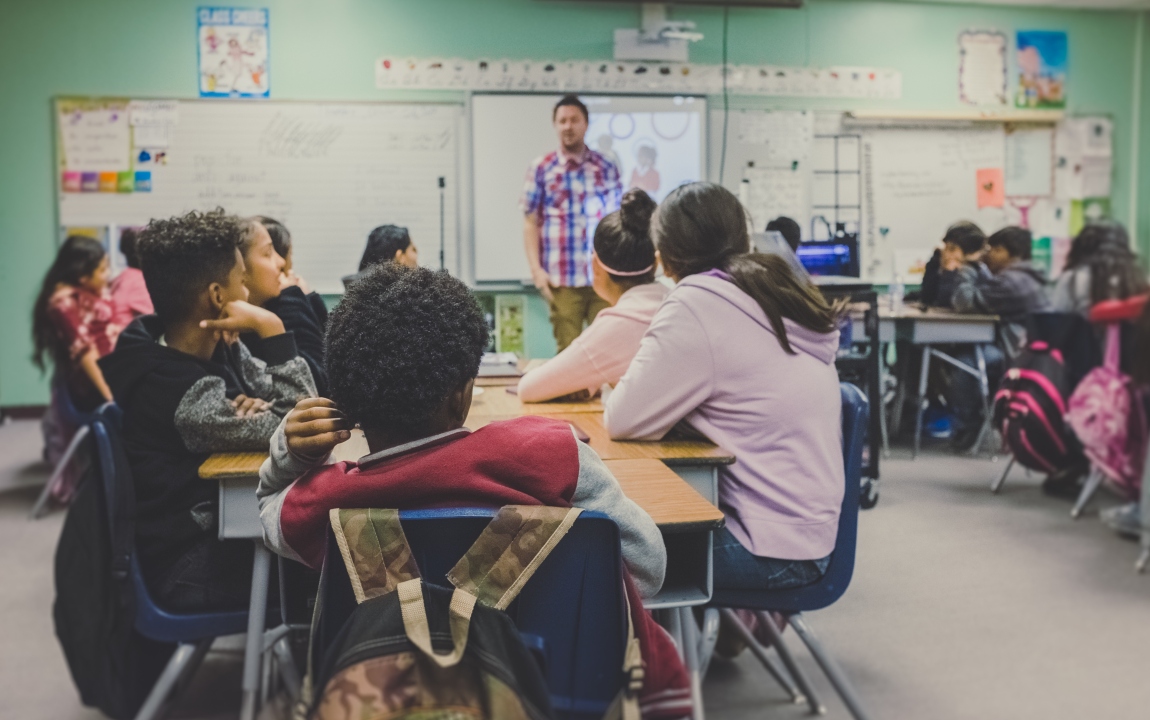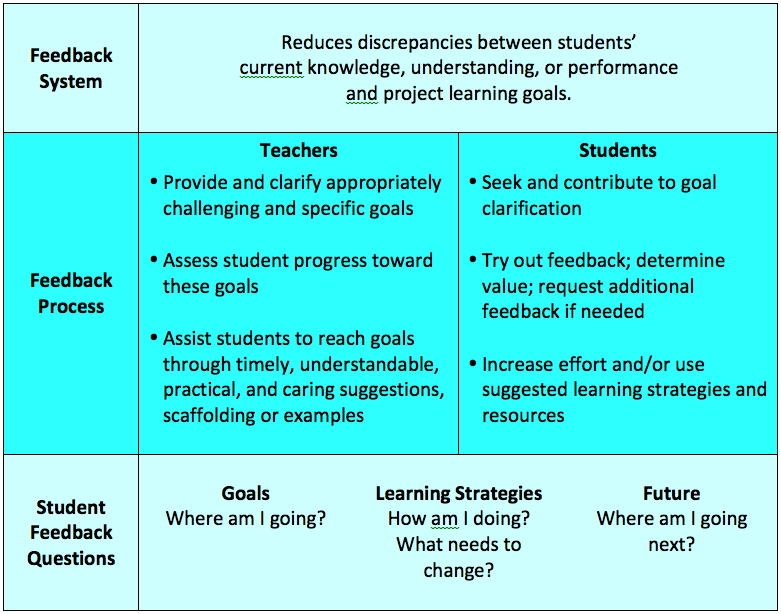 This research brief is a four-part series – Part 1, Part 2, Part 3 and Part 4.
This research brief is a four-part series – Part 1, Part 2, Part 3 and Part 4.
This is the third in a series of posts (see links above) discussing John Hattie’s remarkable quantitative synthesis of the factors influencing student achievement described in Visible Learning, and discussed with more attention to practical implications in Visible Learning for Teachers. My topic is “feedback,” one of the top five factors that Hattie’s analysis (as well as that of other researchers) find most important for student achievement. (For a scholarly treatment of feedback research, more theoretically inclined readers may want to dive into this article (link no longer available) by Hattie and a collaborator in addition to reviewing this post.)
Building Intellectual and Personal Competence Through Feedback
Classrooms and schools are filled with feedback about student performance. It comes in the form of grades, verbal and written teacher observations, and students’ comments about everything from sartorial preferences to writing skills. The problem, however, is that most of the feedback students receive does not help them develop better academic skills or learning strategies. In fact, research shows that a great deal of teacher feedback actually impairs – rather than assists – student learning.
In the remainder of this post, I’m going to describe how Project Based Teaching incorporates feedback as a tool for students’ learning and can help students develop the meta-cognitive awareness and self-management skills that enable them to become their own teachers. I’ll also touch on how teachers can modify their own instructional plans based on the feedback they give students.
The model of feedback on the table below is inspired by a similar table Hattie includes in Visible Learning. I’ve attempted to place his major ideas within the framework of Project Based Teaching.

Think of Feedback as a Purposive, Goal-Driven System, not an Event
Hattie’s vision of feedback is a systemic one that enables both students and the teacher to get better at what they do. It is not built around a single, written or verbal message (“Nice essay. Weak mechanics”), or a summary review of student work at the end of a semester. Instead, feedback is part of a continuing formative assessment effort to make students more effective learners. Feedback provides information and resources that enable students’ learning and actions to reach the goals established. In other words, feedback reduces the discrepancy between what students currently know and can do, and what they will be able to do at the completion of a project.
In the process of giving students feedback, teachers learn whether students are progressing toward learning goals. Feedback is thus a tool that enables a teacher to “know thy impact.” If students are not progressing, it is evident in the feedback provided by the teacher.
Begin with Shared Project Goals and Learning Targets
Generally, it is the teacher who establishes project goals, based upon the key knowledge, understanding, and success skills that are the focus of a project, and communicates these to students through discussion of the driving question. But it can go the other way. In senior projects, and some PBL models, notably EdVision Schools, students propose learning goals that are ratified by the teacher.
Once project learning goals are established, the Project Design: Student Learning Guide form provides a place to describe the learning targets focusing the project, as well as the checkpoints and formative assessments to be used in the project, and the instructional strategies needed to support all learners. It is essential that learning goals are known, understood, and shared by teachers and students. The mutuality of this goal is essential, as it is an uphill battle to get students to work toward the teacher’s goal if they don’t understand it or lack commitment toward it. This is one reason we encourage teachers to carefully parse a project’s driving question with students, to clarify what will be learned and done as the project progresses, and give students a chance to state project goals in their own words. At this point in project activities, there is often some room for student voice and small amounts of choice, which do not affect central project outcomes, but can have major effects on student interest and intellectual commitment.
Note that for feedback to work, students must be able to visualize and understand how to attain the goal. Sometimes such goals are tricky to operationalize and define. For example, students may be unfamiliar with the purpose and structure of press releases and have difficulty evaluating their quality. If a project that includes in a well-crafted press release as a public product, it may require significant time to be spent analyzing what makes a “good” press release, and include class (and team) discussions, during which press releases are examined and compared. Students can then work with the teacher to identify the characteristics that make a press release “compelling,” and create a common rubric for their evaluation.
Not only do goals need to be clear, they need to possess the right amount of challenge. Student motivation research (link no longer available), as well as cognitive learning theory (link no longer available), demonstrate the importance of challenging, but attainable, goals. Goals that are too easy are dismissed by students as stupid and inconsequential. Goals that are too hard are rejected as being impossible to achieve. What is needed are “Goldilocks” goals – just challenging enough, but not unrealistic.
This research brief is a four-part series. Read more in Part 2, Part 3, and Part 4.

